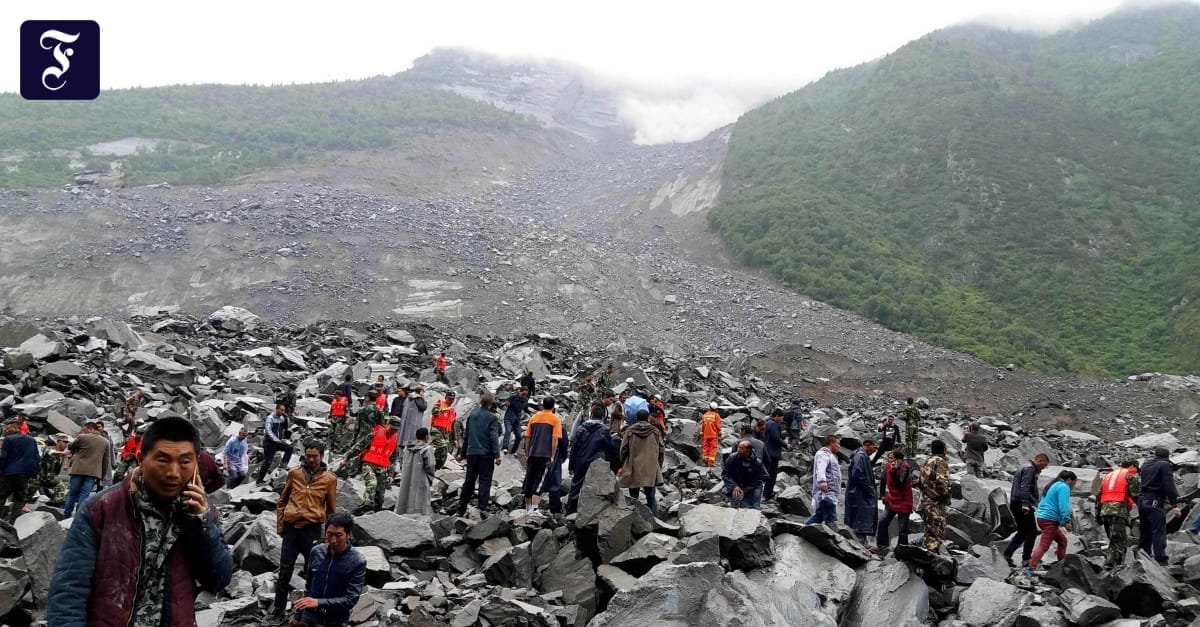A catastrophic landslide struck the mountainous region of Sichuan province in southwestern China on Saturday, claiming one life and leaving more than 30 people unaccounted for. The landslide occurred in Jinping Village, within Junlian County near the city of Yibin, shortly before noon local time. Fueled by unrelenting rainfall, the landslip buried ten homes under tons of soil and debris, plunging the community into chaos and uncertainty.
Chinese state media reported that the landslide occurred at precisely 11:50 a.m. local time, an hour during which many residents were likely going about their daily lives. Rescue operations were initiated within hours, with hundreds of emergency personnel, including fire brigades, rescue specialists, and local volunteers, descending on the site to search for survivors. Heavy machinery and sniffer dogs were deployed, complementing the human efforts to penetrate the dense layers of sediment covering the affected area.
The Ministry of Emergency Management, China’s central authority for disaster response, announced that a Level I emergency protocol, the highest classification, was implemented swiftly to coordinate rescue and relief activities. Helicopters and drones have also been dispatched to map the area and assess the scale of the disaster. Emergency shelters have been established at a nearby middle school, providing food, water, and temporary accommodations for families forced to evacuate the region due to the instability of the terrain.
Authorities continue to investigate the immediate causes of the disaster, which are believed to involve persistent heavy rainfall weakening the slopes around Jinping Village. The mountainous topography of Sichuan has long made the region vulnerable to such geological incidents, especially during periods of prolonged downpours.
Chinese President Xi Jinping has called for “all-out rescue efforts” to save those trapped beneath the tons of debris. He also urged local authorities to prioritize the safety of first responders while taking precautions to prevent secondary disasters. Unstable ground in surrounding areas remains a significant concern for rescuers, who must navigate dangerous conditions to perform their duties effectively.
Weather forecasts predict a continuation of rains in the area for several more days, potentially complicating rescue efforts and increasing risks for both emergency workers and displaced residents. Geological experts have been deployed to monitor vulnerabilities in adjacent slopes and to issue evacuation warnings if further movements are detected.
In the broader context, such landslides underscore the precarious living conditions faced by communities in regions prone to geological instability. Sichuan’s provincial government has promised to mobilize additional resources to support affected families and pledged a detailed review of the disaster to learn lessons for future risk mitigation.
As night fell on Saturday, rescue teams erected floodlights to continue their lifesaving work despite the hostile conditions. While the operation has already saved several lives, the mood remains somber as families wait for news about their loved ones. “Every second counts,” remarked one rescue worker quoted on local television. “We will not give up until we’ve done everything possible.”
This latest disaster follows similar incidents in Sichuan in recent years, where landslides have repeatedly resulted in loss of life and significant economic setbacks. With shifting climates and increasing unpredictability in weather patterns, national and provincial authorities face growing challenges in safeguarding the lives of those who call these hazardous regions home.
The Chinese government has allocated 80 million yuan (approximately $11.16 million USD) for immediate disaster relief, focusing on quick response and the reconstruction of basic infrastructure. Non-governmental organizations and international disaster-relief teams have also expressed readiness to extend assistance if required.
For now, the focus remains fixed on search-and-rescue efforts. Those missing include elderly residents, children, and entire families caught off guard by the catastrophic impact of natural forces. As time runs out, the dedication of the rescue teams operating in harsh conditions serves as a beacon of hope for those clinging to the possibility of another life saved.



